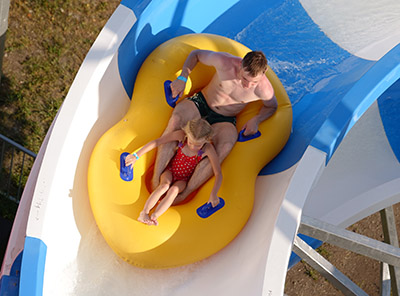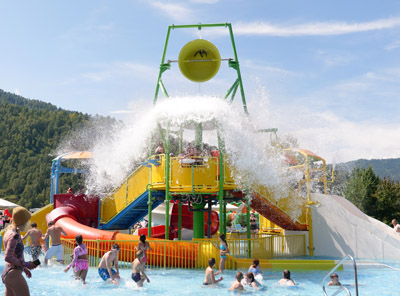The residential community environment is a relatively independent enclosed space for urban space, which requires that in a limited space, we need to meet all age people’s activity needs and aesthetic requirements. As a special group, children have higher requirements for the living environment of the community, and they need to comprehensively consider the safety, learning, entertainment, interaction, fun, and exploration of the environment.

current status of children’s activity venues in residential communities
Single facility
Children’s playgrounds in residential areas are uniform for children’s amusement facilities. In order to save construction costs and reduce the difficulty of on-site construction, most children’s playgrounds in residential areas simply place some finished slides. This kind of factory intensive production of finished children In addition to the differences in color, shape, and texture of the amusement facilities, the functions are almost the same. It is difficult to stimulate children’s enthusiasm for outdoor activities and improve children’s cognitive ability.
Lack of multi-age considerations
Children’s cognitive structure also shows different cognitive experience needs of different ages. For example, children 0 to 2 years old have a certain understanding of simple patterns and colors, and children 2 to 7 years old can play collectively. Children aged 7 to 12 need more challenging rides. Our current residential area for children’s activities can only meet the cognitive needs of children at a certain stage, and cannot meet the experience needs of children at different cognitive stages during their growth.

Community view scene construction
First of all, there must be certain fluctuations in the spatial dimension, that is, the richness of the vertical space is shaped to provide more possibilities for children’s outdoor activities, such as: micro-terrain play areas, continuous undulating terrain can give children a rich spatial experience .
Second, the change of the time dimension is naturally a teacher for children’s growth, making full use of the combination of natural elements and artificial environment. For example, the planting area is reasonably matched with plants and ornamental flower and fruit plants, so that children can recognize the habits and characteristics of different plants in the natural environment and sense the changes of the four seasons.
Finally, the construction of plots for children’s landscape places. The introduction of the concept of plots in the design of children’s landscape places is conducive to the vividness and creativity of children’s play environments. For example, some fantasy theme parks in Disneyland combine fairy tales with children’s activity venues to create a strong sensory and amusement experience that greatly stimulates children’s cognition and imagination.
Break through the limits of rides
Breaking the traditional and single setting of amusement facilities, children’s amusement facilities should not be limited to Trojans, swings, slides, etc. produced by the factory assembly line. The purpose should be to develop children’s imagination, organize interactions between children, and promote children’s continuous learning of new things. Try more playful rides from different sensory perspectives, and pay attention to “blank space”, and properly reserve the space for children to create independently.

Involving children in decision-making
Introduce the concept of “child-friendly cities”. Including children or child guardians in the design and discussion of the residential community environment, consulting and recording the needs of children or child guardians of different age levels, taking into consideration the outdoor play needs of children of all ages, and meeting the child’s growth from the perspective of time Requirements for the improvement of the external environment’s cognitive ability.






